#form 16A
Text
A comprehensive guide to Form 16A: A TDS Certificate
Form 16A is a TDS certificate that is issued by the deductor on a quarterly basis. It is a statement concerning the nature of payments, the amount of TDS, and the deposited TDS payments to the Income Tax department. It also consists of brokerage, interest, professional fees, contractual payments, rent, and other sources of income.
Unlike Form 16, which only consist salary structure, Form 16A of income tax charge TDS from:
Receipts from business or profession fees.
Rental receipts from a property or rent.
Sale proceeds from capital assets.
Additional source.

Important components of Form 16A
The important components of Form 16A are:
Details of the Employer: It contains the name, TAN, and PAN of the employer.
Details of Employee: It contains the name, TAN, and PAN of the employee.
Mode of Payment: Both offline and online modes of payment are available.
Receipt number of TDS: The receipt number of TDS helps in the tracking of back details.
The date and deposit tax amount with the income tax department help track information.
Significance of Form 16A
Form 16A plays a pivotal role while filing an income tax return, especially when someone has other sources of income apart from their salary. Here are the key benefits of Form 16A:
Filing of income tax returns: The details contained in Form 16A help employees file their income tax returns. It guides employees in reporting their total income, which includes salary and other sources.
Tracking of TDS: It helps every individual keep track of the tax deducted at source (TDS) on their income. It gives you a summary of TDS deducted at source.
Income Proof: Form 16A works as evidence of an individual's total earnings from other sources. Government agencies and financial institutions, like banks, easily accept this source as income proof.
Loan Applications: This form is important in verifying the loan applications. Financial institutions often need a record of the assets and liabilities of an individual to check the guarantee on loan repayment.
How to download Form 16A?
Below are the following steps to download Form 16A:
Visit the official website of the income tax department.
Complete the registration process on the website.
Click the "Download" tab, and then select Form 16A.
Fill in the PAN details, and then click “Go to continue.”.
Click submit and download Form 16A.
What is the difference between Form 16 and Form 16A?
Form 16 and Form 16A are both TDS certificates, but there are certain differences between them. The following are the differences between Form 16 and Form 16A:
Form 16 is a TDS certificate deducted from salary, whereas Form 16A is issued for income other than salary.
Form 16 is issued by the employer, whereas Form 16A is issued by financial institutions.
Form 16 is used for deducting tax from salary, whereas Form 16A is for removing taxes from another source of income apart from salary.
Final Thoughts
Paying taxes is the responsibility of the citizens of the nation. It is evident that the process of filing an income tax return and Form 16A is restless and troublesome. Some technical terms of income tax are not known to the new taxpayer. Worry not, because Eazybills will solve every tax-related problem and also offer TDS tracking.
So? What are you waiting for? Connect to us today through our website, where our professional team will guide you according to your requirements.
#form 16A#income tax return#tds certificate#file income tax return#easy billing software#gst billing software#free invoicing software#billing software#free billing software#best billing software#online billing software#online invoicing software#best invoice software
0 notes
Text
youtube
#nilesh ujjainkar#taxguidenilesh#tds certificate#form 16#form 16a#tds#new tax regime#tax slab#Youtube
0 notes
Text
Portfolio advice, from a lead who hires Concept Artists
(This was originally a twitter thread I wrote before the site self imolated, hense it's strange structure.)
I wrote this after a weekend of portfolio reviews -
1. Like a maths exam, please please show your working. I want to see thumbs options, mid options and of course a final design.
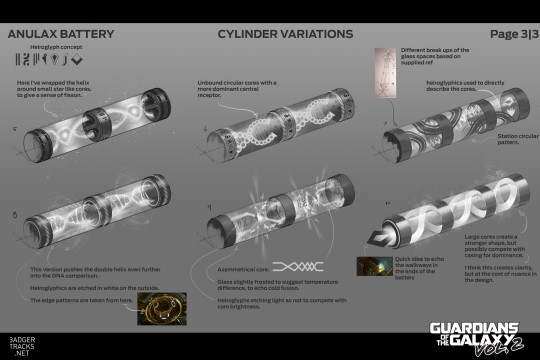
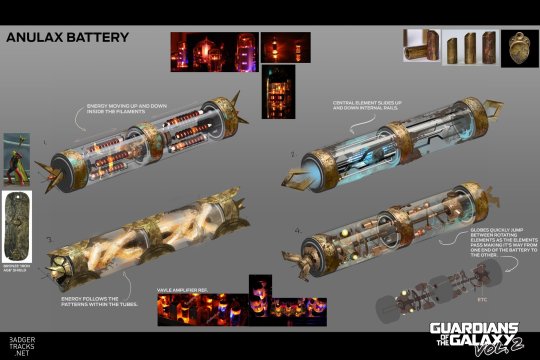
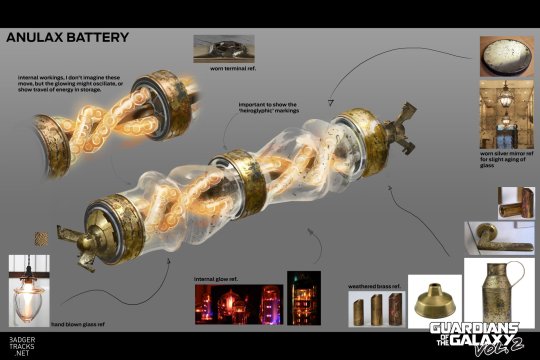

2. Arrange your portfolio, I don't want to bounce about between subject matter and pipeline. Your portfolio's narrative should be as strong as your work...
3. Please make worlds that excite the viewer, make them want to go in and explore them, explain to them the interesting parts of the town, or the way the character's hat unfolds. How will this draw the viewer in?
4. As I've said before the majority of your project work is explanatory not mood, make sure your portfolio contains explanatory work. Explained here -
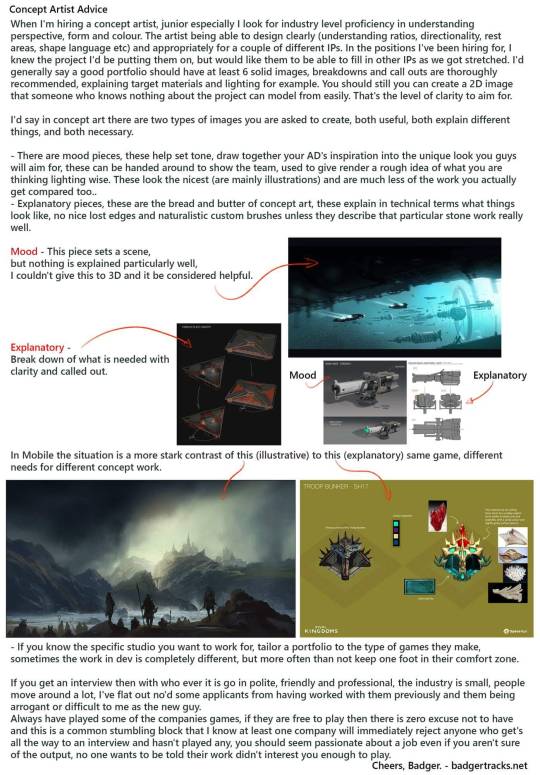
5. A lot of beautiful post apocolyptic paintings, , but 80% of realistic games and film, we just give the environment artists photo ref, they are capable artists in their own right. Different work in stylised where you do need to create rules for how things can be translated.
6. Production art contains call out sheets, material references and flat graphics. This doesn't have to be your final image, but it should support it.

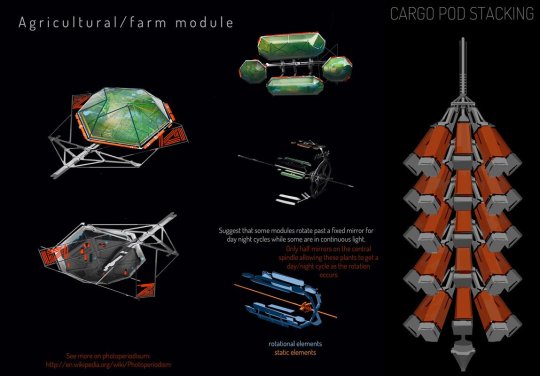
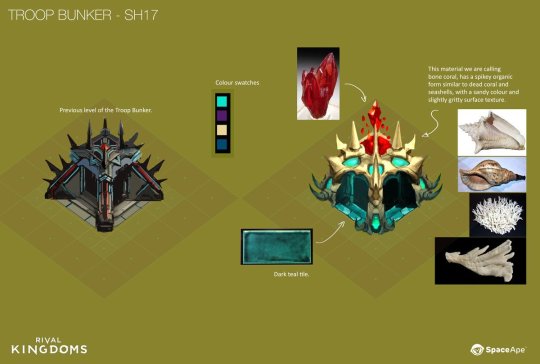
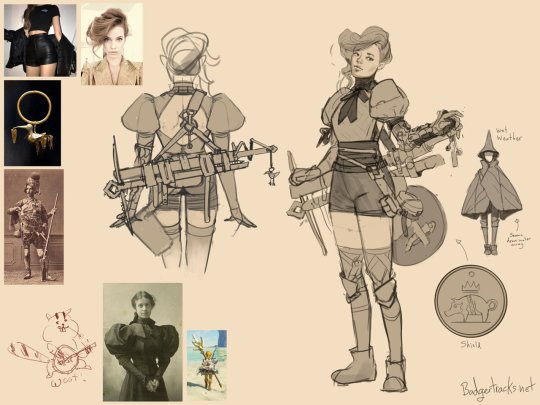
7. Design characters on a swatch(es) of the environment they will be viewed in. Not on white. I make swatch backgrounds from screenshots, it avoids assumptions that damage readability.
8. Reverse of this, put people in your environments, show me the scale.
9. It's not a deal breaker for a review, but if you intend to get a job, please show me your work on a screen larger than a smartphone (print outs probably the cheapest option with the best battery life).
10. Please have your contact details clearly visible, and by that I mean email address, I will not pass your social media contact on, I cannot input your form into my tracking system. EMAIL ADDRESS emblazoned and bake it in, sometimes recruiters do funky stuff to pdfs
11. Your portfolio will never feel done, not to you anyway. You will have learnt from your latest pieces and want to apply it to older work. But we know art is a journey. Send your portfolio anyway. I've been in the industry 10+ years and my portfolio is still not 'finished'.
12. If you are applying to an environment centric Concept Art position then please vary your times of day! Golden hour is cool but show me some happy sunny days, looming overcast days, what about at night? Vary your weather too! Sunny snowy day? Rainy Spring day? Stormy night?
13. If you are applying for a character centric Concept Art role then please ensure your portfolio shows a variety of body types and ethnicities.
14. Designing characters for games?
Please show back views and feet (!) Many potfolios contain only front views.
This is a problem because:
You haven't shown you are considering the design from all angles.
In many games rear view is the main view.
Stop cropping feet.
15. If you are entry / graduating and looking at Portfolios to compare content and standard of yr own work too, look at hired grad/junior artists as opposed to seniors Seniors and leads often have old or personal work in their portfolio which isnt representative of the day job.
16a. Show clearly the intended use case for your Concept Art. Mention the game type in the description. Are these player character designs for a 3rd person adventure game? Then more back views please. Bonus points for diagetic ways of showing health / equipment / role etc.
16b. Are these designs for an FPS? Then really the player view of the gun needs to sell the player style/ choices, in an FPS your weapons are almost your character. Are these world designs? What's the view distance? For an RTS your shapes need to read from above & a distance.
16c. The lack of clarification means I am judging the design in isolation, which both harms the design (you might be considering the backview of a char as the main adventure character.) Or an NPC, their waist up expressions may be important for conveying exposition and mechanics.
16d. Concept art is not separate from gameplay, great concept art serves the game team before it is a good illustration.
17. Play games. A variety of games. Think about them. IMO to be a good concept artist you need to understand the common language & references used by your peers. Also understand the principles and common language your audience are used to. FPS design rules are v.diff from RTS.
18. There are many skills that are needed in concept art, please show them. For example: Graphic design - logos, liveries, typographic use etc. VFX concepts - Abilities, Ambience, motion concepts. Architectural knowledge - How buildings are built! & more but I'm out of space :O
6K notes
·
View notes
Text

Student cleans up archival data and uncovers two stellar cocoons
While investigating 16 years of images of young stars from a retired astronomical camera, Leiden master's student Sam de Regt discovered that two of those stars were still enveloped in birth clouds that had not been seen at this level of detail before. He publishes his data-cleaning method and the new images of the two stars in the journal Astronomy & Astrophysics.
When Sam de Regt (Leiden University, the Netherlands) attended lectures of Matthew Kenworthy (Leiden University) and Christian Ginski (now University of Galway, Ireland), he thought it would be interesting to research the so-called PDI method for his master's thesis. PDI stands for Polarimetric Differential Imaging.
This method allows astronomers to distinguish between the extremely bright, unpolarized light from a star and the faint, polarized light reflected from dust particles located in a disk around the star. In such dust disks, planets can be formed.
Ginski and Kenworthy suggested to De Regt to reanalyze archival images from the NACO instrument. That instrument was located on the Very Large Telescope in Chile from 2003 to 2019 and contains data from 57 young stars.
After cleaning up the images, De Regt saw dust disks around twenty known stars. To his surprise, in addition to those 20, two other stars were found to contain dust structures in these observations: YLW 16A and Elia 2-21. These protostars are located some 360 light years towards the constellation Ophiuchus (known as the serpent-bearer).
Openly accessible
"I find it super cool that we have made two new images of these stellar cocoons," says De Regt. "Furthermore, it is of course great that, thanks to the standard procedure we developed, the data have been reduced and are openly accessible via a Zenodo archive."
Thesis supervisor Matthew Kenworthy adds, "This allows other astronomers to carry out research with this data, breathing new life into it. It's a good example of the Open Science principle."
"The fact that Sam managed to achieve this in a few months is fantastic," says graduation supervisor Christian Ginski. "We don't often witness such productivity."
De Regt is now a Ph.D. student at Leiden University. He studies how the formation of exoplanets leaves imprints in their atmospheres.
IMAGE....The NACO archive contains data on 57 young stars. Twenty stars had known dust disks or substructures. Master's student Sam de Regt (Leiden University, the Netherlands) discovered two new images of YLW 16A and Elia 2-21 (bottom left and bottom center), while cleaning up the archive. Credit: ESO/VLT/NACO, De Regt et
12 notes
·
View notes
Text
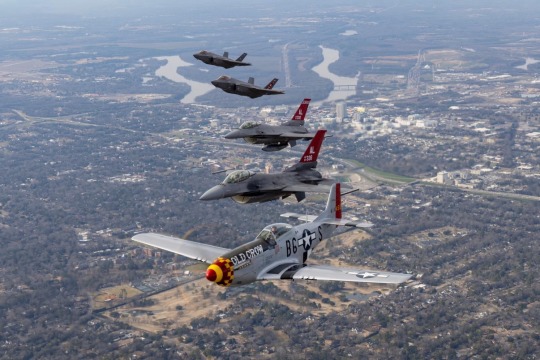
Last month, our friend @mattbooty had the privilege to fly with the 187th Fighter Wing, Alabama Air National Guard and their new F-35A Lightning II fighter jets, along with their existing F-16A ADF fighters and a special guest P-51D Mustang. The red tails are a historic tribute to the Tuskegee Red Tails, the famed WWII squadron, which lives on as the 100th Fighter Squadron within the wing.
This quote from a ceremony at the airport the next morning: "The red tail you will see is a reminder to all that through excellence we will overcome any obstacle and threat regardless of gender, race or religion," said Col. Brian Vaughn, the wing’s commander. "We are all here for the same mission: to protect our nation, defend our constitution, and to form a more perfect union as the Tuskegee Airmen did."
Pilots: P-51 Lt. Col. Raymond "Hollywood" Fowler, F-16 (clean) Lt. Col. Jeremy "Griz" Wiggins, F-16 (drop tank) Capt. Capt Alex "Sanka" Aderegg, F-35 (red tail) Capt. Robert "Alamo" Freeman, F-35 (gray tail) Lt. Col. Richard "Sheriff" Peace. Photo pilot: Melissa Fowler, co-pilot Joshua Fowler. Mission credits to Scott Slocum for coordinating the flight and aerial direction.
@WarbirdNews via X

10 notes
·
View notes
Text
Flying High|| Meeting Wilbur Soot
“Excuse me sir,” a perky, red-lipped flight attendant leaned in closer to Wilbur, “If you wouldn’t mind, there’s a couple who have been separated and we’re trying to seat them together.” She pointed a painted fingernail at an elderly man a few seats up and an equally wrinkled, small old woman sat a few rows across the airplane.
“Do you mind moving seats? 16A is still an aisle seat,” the flight attendant bargained.
“Of course,” Will smiled and quickly grabbed his things, wrapped his earphones around his hand. He peered behind him to see an adorable old couple smiling softly to each other and holding hands as they sat back.
“Hello,” he smiled at you and pushed his backpack beneath his seat. He sat down and plugged his earphones into the armrest.
You turned your head side to side, peering around the plane cabin before landing your eyes on Will, “Hello...what happened to the old woman who was here?”
Will pointed behind him at his old seat, “She wanted to be with her husband.”
You followed the tip of his finger to where she sat, interlocking hands with her small framed husband.
“You switched seats with her?” Your voice didn’t hide your incredulous attitude towards Will.
He nodded, “Yeah...that’s not a problem is it?” His brow furrowed at you as you snuck another glance at the old couple in the back of the plane.
“No, not at all...” you started, “it’s just, that’s so sweet of you.” You smiled and sat back in your seat.
Will shrugged, “It’s the right thing to do, isn’t it?”
“I didn’t know people did that anymore,” you mumbled under breath.
“Maybe you need to keep better company.” Will’s voice was steady, so steady that you whipped your neck to the side to look at him only to be greeted by a cheeky glint in his eye.
You felt your face go flush and bit your lip, “Yeah...maybe I do.”
Suddenly the very populated plane felt like an intimately private space, where a stranger’s pair of kind eyes threatened to offer you something special.
“I’m Y/N,” you said confidently.
“Will. First time going to London?”
You nodded, “Yeah,” your nerves produced a hint of a giggle, “I’m moving for school.”
“Nice, I think you’ll enjoy it. Once you get past the weather, it has a lot to offer.”
“I’m used to bad weather,” the words shot out of your mouth before your quick follow up, “Was it your first time in the US?”
Will nodded slowly, “Yeah I was visiting a friend.”
Something in your chest fell, like a small ball of hope had been shattered. You felt ridiculous, thinking to yourself that no one actually met a date on an airplane.
“Oh,” you tried to hide your disappointment, “I’m sure she appreciated it.”
“He did,” Will shared matter of factly before stumbling, “He- uh...well he needed something to make him feel better.”
You nodded softly, “You sound like a good friend.”
Will’s mouth formed a straight line, “Yeah, he is too.”
You looked down at your feet to avoid Will’s sullen expression and then pointed your eyes back up at him,“You- uh- you live in London?”
“No, I live a bit south in a place called Brighton.” You were glad to see the sour look leave his face as his radiant eyes made you feel like the only person in the room.
“So that means you can’t be my personal tour guide?”
He chuckled and smiled at you, “That means you have an excuse to visit Brighton.”
“And how am I supposed to know where you live?” You laughed brightly.
“Well hand me your phone and you can find out.”
You handed him your phone and watched he happily typed his number. You blushed harshly under the fluorescent lights of the plane. Will gave you a cheeky smile as he handed your phone back. You took deep breaths and returned the phone into your jacket pocket. Exhaling quietly you felt yourself melt into your seat as you looked out the window.
“So,” Will started with a chuckle, “You’re not going to talk to me for the rest of the flight?”
#happy to continue this with blurbs from the plane right#how did i do#wilbur soot#dsmp#fanfiction#wilbur x reader#wilbur x you
161 notes
·
View notes
Text

24th September >> Fr. Martin's Gospel Reflections / Homilies on Matthew 20:1-16 for the Twenty Fifth Sunday in Ordinary Time, Cycle A: ‘Why be envious because I am generous?’
Twenty Fifth Sunday in Ordinary Time
Gospel (Except USA)
Matthew 20:1-16
Why be envious because I am generous?
Jesus said to his disciples: ‘The kingdom of heaven is like a landowner going out at daybreak to hire workers for his vineyard. He made an agreement with the workers for one denarius a day, and sent them to his vineyard. Going out at about the third hour he saw others standing idle in the market place and said to them, “You go to my vineyard too and I will give you a fair wage.” So they went. At about the sixth hour and again at about the ninth hour, he went out and did the same. Then at about the eleventh hour he went out and found more men standing round, and he said to them, “Why have you been standing here idle all day?” “Because no one has hired us” they answered. He said to them, “You go into my vineyard too.” In the evening, the owner of the vineyard said to his bailiff, “Call the workers and pay them their wages, starting with the last arrivals and ending with the first.” So those who were hired at about the eleventh hour came forward and received one denarius each. When the first came, they expected to get more, but they too received one denarius each. They took it, but grumbled at the landowner. “The men who came last” they said “have done only one hour, and you have treated them the same as us, though we have done a heavy day’s work in all the heat.” He answered one of them and said, “My friend, I am not being unjust to you; did we not agree on one denarius? Take your earnings and go. I choose to pay the last comer as much as I pay you. Have I no right to do what I like with my own? Why be envious because I am generous?” Thus the last will be first, and the first, last.’
Gospel (USA)
Matthew 20:1–16a
Are you envious because I am generous?
Jesus told his disciples this parable: “The kingdom of heaven is like a landowner who went out at dawn to hire laborers for his vineyard. After agreeing with them for the usual daily wage, he sent them into his vineyard. Going out about nine o’clock, the landowner saw others standing idle in the marketplace, and he said to them, ‘You too go into my vineyard, and I will give you what is just.’ So they went off. And he went out again around noon, and around three o’clock, and did likewise. Going out about five o’clock, the landowner found others standing around, and said to them, ‘Why do you stand here idle all day?’ They answered, ‘Because no one has hired us.’ He said to them, ‘You too go into my vineyard.’ When it was evening the owner of the vineyard said to his foreman, ‘Summon the laborers and give them their pay, beginning with the last and ending with the first.’ When those who had started about five o’clock came, each received the usual daily wage. So when the first came, they thought that they would receive more, but each of them also got the usual wage. And on receiving it they grumbled against the landowner, saying, ‘These last ones worked only one hour, and you have made them equal to us, who bore the day’s burden and the heat.’ He said to one of them in reply, ‘My friend, I am not cheating you. Did you not agree with me for the usual daily wage? Take what is yours and go. What if I wish to give this last one the same as you? Or am I not free to do as I wish with my own money? Are you envious because I am generous?’ Thus, the last will be first, and the first will be last.”
Reflections (3)
(i) Twenty Fifth Week in Ordinary Time
Most of us react instinctively against any form of behaviour that we consider to be unfair or unjust. If we think that we ourselves are being treated unfairly we can feel especially annoyed. We don’t like to feel that others are getting preferential treatment. Perhaps that is why we find ourselves identifying very easily with the complaint of those who worked all day in the vineyard. ‘The men who came last have done only one hour, and you have treated them the same as us’. It didn’t seem fair to them that those who had worked only an hour should get a day’s wages, which was a denarius at that time. In that case, those who worked twelve hours should really be getting the equivalent of twelve day’s wages. We easily share their outrage at this unfairness.
Many of Jesus’ parables seem to set out to disturb us in some way. We are all familiar with the parable of the prodigal son. Again, we feel that the elder son is not being treated fairly. He had been working faithfully, and, yet, when his younger brother returns home, after wasting his share of the family inheritance, he is treated like royalty by the father. Many people have the same reaction to that parable as they do to the parable in today’s gospel reading. The parable of the prodigal son is really a parable about God. Jesus is saying that God lavishes his love and mercy on all, including those who least deserve it. Rather than grumbling about this, like the older son, we need to rejoice in it, because, as Jesus knew, there is something of the prodigal son in all of us. Whenever we try to stagger back towards God having made a mess of things, it is reassuring to know that the God whom we will meet is much more like the father in the parable that the older brother.
Today’s parable too is a story about God. Jesus is trying to convey some sense of God, his Father, whom he knows and loves intimately. He is saying that God does not relate to us on the basic of what we deserve or have earned, on the basis of strict justice. In one of his letters, Saint Paul refers to ‘the breadth and length and height and depth’ of God’s love, of Christ’s love. God’s loving, generous, heart is so wide and deep that it cannot be contained within the limits of what we consider to be just or fair. It is not that God is unjust, but that God’s mercy and goodness move beyond justice. In the parable the vineyard owner said he was just to those who worked all day, giving them a day’s wages for a day’s work, as promised, but he related to all the other workers in a way that went way beyond strict justice. He was very generous with them. He wanted everyone to have a living wage at the end of the day, including those who had been hanging around the market place waiting for someone to hire them. The parable ends with the question of the vineyard owner to those who worked all day, ‘Why be envious because I am generous?’ In other words, ‘Be grateful that you got a day’s wages, and rejoice that your fellow workers got the same and, like yourselves, have enough money to feed their families’.
The parable asks us all, ‘Can we be grateful for God’s big heart that Jesus has revealed to us?’ God doesn’t ask us to earn his favour. At the end of our lives, we will be judged by grace rather than strict justice. God has the freedom to bestow his gracious love, his generous spirit, upon all of us, regardless of whether we have deserved it or not, and that is something to rejoice in. We can experience something of this gracious love of God in and through those relationships that are most precious to us. We may be fortunate enough to have met someone who looks upon us with love, even when we have done nothing to deserve it. They are faithful to us through thick and thin, even though we might give them very little reason to be faithful to us. Their love is constant, even when ours is fickle. If we have been fortunate enough to have met someone like that, it is a glimpse into the heart of God.
When Jesus speaks a parable, we often find ourselves identifying with one or other of the characters in the parable. Most people identify with the workers who worked all day, and feel their resentment. However, if we were to identify with the latecomers, we might feel differently about the parable. We would have a sense of being undeservedly graced and favoured, and we would rejoice and be grateful. That is where we all belong in some sense, with the latecomers, because, although we may have been baptized as children, we haven’t always lived our baptism calling to the full. Yet, the Lord never ceases to call us, just as he called some of the workers at the eleventh hour. If we respond to the Lord’s call, no matter how late, we will experience a God whose ways are not our ways, whose generous heart is not of this world.
And/Or
(ii) Twenty Fifth Sunday in Ordinary Time
For most of us, our day to day life can be reasonable predictable. One day is much the same as the day before. We have a certain routine that we tend to keep to. Many of us do not like our routine to be disturbed. However, we also know from experience that the unexpected can suddenly come along and throw our routine up into the air. Some misfortune can strike us or those we love and nothing is ever quite the same again. Or, alternatively, some wonderful news can come to us out of the blue and everything we subsequently do is bathed in a new light.
That element of the unexpected is very present in today’s gospel reading. There is something very surprising, even shocking, about the way that the landowner in that story operates. Most employers do not give the equivalent of a day’s wage to somebody who only does an hour’s work. If they did, their business would not last very long. Why would anyone want to work for a day if they were sure of getting a day’s wages for an hour’s work? The story that Jesus tells is decidedly not about the human way of doing things. Rather, in story form, Jesus is giving us a picture of God’s way of doing things, and he is showing us that God’s way of doing things is very different from our way. As the Lord says in today’s first reading, speaking through the prophet Isaiah, ‘my thoughts are not your thoughts; my ways are not your ways’. Because God’s ways are not our ways, we will often find God surprising and even disconcerting, just as listeners to the parable today continue to find the behaviour of the landowner disconcerting. This is the one parable of Jesus that is most likely to get people’s backs up. We feel that an injustice is being done to those who worked all day. Yet, the vineyard owner gave those who worked all day a just wage; he gave them a denarius, which was considered a day’s wages. He was just surprisingly generous to those who, through no fault of their own, could only find an hour’s work in the course of the day.
We know from experience that people can surprise us. Some people might surprise us in a negative sense. They do not measure up to our legitimate expectations of them; they disappoint us. Others can surprise us in a positive sense. They far exceed our expectations; they show us that there is more to them than we ever realized. Today’s parable suggests that God will surprise us in that positive sense. God’s goodness is always greater than we realize; God’s generosity will always exceed our expectations. God does not give to us in accordance with what we have earned. God does not put our efforts on one side of the scale and then put an equal amount of favour on the other side of the scale to balance our efforts. God graces us in unexpected and undeserving ways. God gives us the equivalent of a day’s wages for an hour’s work. In the words of the title of a book written by the great spiritual writer, C.S. Lewis, when it comes to God, we can expect to be ‘surprised by joy’. The grace and love of God transcends our human assessments of what is fair and we cannot understand God solely in terms of the principle of fairness. If we stop to think about it, the same is true of our own relationship with others. The love and graciousness that we show to family and friends cannot be understood or evaluated merely in terms of fairness.
When we reflect on it, most of the best things in life are unearned; they are simply given. Nature in all its beauty and grandeur is given to us; we have not put it together; it is there to be received. The human experience of being looked upon in love by another is not something we earn. We find ourselves graced by the unexpected gift of someone’s friendship and love. In a similar way, God’s favour, God’s love is given, not earned. We are loved by God, before we do anything, because God is Love, and God does not take back that love, regardless of what we do or fail to do. As it has been said by one writer, ‘God does not work from the arithmetic of the calculator, but from the fullness of God’s own heart’. The gospels, and especially today’s parable, even suggest that God has a slight prejudice in favour of life’s latecomers, those who take a while to get going. We probably all fall into that category in one way or another. In telling that story Jesus may have wanted us all to identify with the workers who started work at the eleventh hour.
The parable speaks to us of God’s generosity; it is a story of grace. We are each challenged to reflect something of that indiscriminate goodness and generosity of God in our dealings with one another. The God of surprising generosity can become palpable for others in and through our own way of relating. God’s ways are indeed not our ways, but our ways can become a little more like God’s ways, with the help of the Holy Spirit.
And/Or
(iii) Twenty Fifth Sunday in Ordinary Time
The parable of Jesus that we have just heard does not seem to make a great deal of sense by the standards of how today’s labour market works. Battles have been fought to ensure that there is a minimum hourly wage. It follows that those who work longer hours should get more pay. Any deviation from that would rightly result in industrial action, at least in most democratic societies. A great deal of negotiation in relation to work conditions has to do with ensuring that people get a just wage that relates to their skills, their hours and their responsibilities. It is because the parable is so much at odds with today’s way of proceeding that people often have a very negative reaction to it. Understandably they consider the employer to have acted very unfairly in giving the same wage to the men who worked for the last hour as to the men who worked from early morning in the heat of the day. People often have a similar reaction to the parable of the prodigal son. The elder son who worked away on the estate complains of being treated less favourably than the rebel who headed off and wasted his resources and came back with his tail between his legs. People tend to sympathize with the elder son, just as they do with those who worked all day in this morning’s parable.
The story reflects the conditions of rural Galilee in the time of Jesus. We have men waiting in the village market square hoping that some large landowner will come along and give them a day’s wage so that they can feed their family. The landowner was just to those he hired at the beginning of the day. He agreed to pay them a denarius for their day’s work on his farm, which was the equivalent at the time of a fair day’s wages. When the landowner went out to the village square every three hours in the course of the day he found there were more men waiting around hoping to be given some work, even if it was only a few hours work. Each time the landowner saw men waiting hopefully for work, he took them for the time of the day that was left. At the end of the day, he gave everyone a day’s wages, even those who had worked only a few hours. Perhaps he realized that anything less might not enable them to feed their family for the day. The landlord was just to those who worked all day. He was simply extremely generous to those who had only worked a few hours and in some cases just one hour. A normal landowner would have just given a hour’s wages for an hour’s work, three hours wages for three hours work and so on. However, this was a landowner who broke the mould. In a similar way, the father in the story of the prodigal son broke the mould of the normal father in that culture.
In his parables, Jesus draws from the world that he and his contemporaries are familiar with, but so often his parables go beyond what is normal in that world. We somehow sense that this is not business as usual. There is something else going on here, which we find disconcerting because it is out of kilter with what we are used to. The key is to be found in the words with which Jesus begins the parable, ‘the kingdom of heaven is like...’. Jesus is drawing from the reality that everyone was familiar with, but he is really talking about another reality, ‘the kingdom of heaven’. When we hear the term, ‘kingdom of heaven’, we tend to think of heaven, life beyond this earthly life. That is not what is meant here. Jesus is really talking about the reign of God, the way things work in God’s realm, when God’s purposes are coming to pass. That has as much to do with this life as with the next. In this parable, Jesus was trying to give us a little glimpse of the ways of God. Speaking through the prophet Isaiah in our first reading, God declares, ‘my thoughts are not your thoughts, my ways not your ways’. Jesus is suggesting that there is something to the ways of God that seems strange when placed alongside our way of doing things.
If the strangeness of God’s ways, as reflected in the behaviour of the landowner, seem disconcerting to us at first, God’s strange ways are ultimately very reassuring for us. The parable suggests that God does not relate to us on the basis of strict justice. God’s favour is not parcelled out on the basis of what we have earned. God is constantly gracing us through his Son in ways that bear no relationship to what we have done, or failed to do. How we hear this parable will to some extent depend on those with whom we identify in the story. If we identify with the men who worked all day we will be tempted to feel resentful at God’s generosity towards those we consider less deserving. However, if we identify with the undeserving ones, those who were called into the field at the end of the day, we can allow ourselves to experience the thrill of divine generosity. Maybe, that is where the parable invites us to place ourselves. We are all undeserving, and, yet, God continues to grace us in and through his Son every day, if we have eyes to see. The parable also invites to allow something of God’s ways to shape our ways, so that we too begin to relate to others not on the basis of what they deserve but out of the generosity of our heart.
Fr. Martin Hogan.
10 notes
·
View notes
Text
Stalblind - CR16 Div
A multi-phase boss fight based on Blind from Link to the Past.

Artwork by OctoDojo on DeviantArt.
This creature is based mostly on Blind from Legend of Zelda: A Link to the Past, but its name and a few of its abilities are from the similar boss Stalblind from Legend of Zelda: A Link Between Worlds.
A stalblind is a fiery div driven by greed, but also by a desire to be trusted so that it can betray those who misjudge it. Stalblinds are known to disguise themselves as helpless captives of their own allies and traps, burning any who fall for the ruse to ash when their guard is down. When a stalblind’s disguise fails, it flies into a rage.
The idea of a creature that has to be defeated three times in a row is pretty classic video game nonsense, but rarely seen in TTRPGs. The end result here is a creature that not only takes far longer to kill than a normal enemy (making it feel much more like a boss), but also only loses one of its three lives if it fails a save-or-suck effect (which I think is also very appropriate for a boss).
I rarely give enemies spell resistance, but thought it was appropriate for the stalblind heads, since I wanted them to be harder to deal with than their low HP suggests. Going after the main body and ignoring the stalblind heads should be a viable strategy, and I think the combination of DR and SR accomplishes that.
A stalblind encounter is only considered defeated when players burn through all three of its lives; players don’t get the EXP three times for defeating this encounter. Stalblind heads don’t give EXP, don’t have a challenge rating, and are not really appropriate enemies to include on their own.
Stalblind - CR 16
A beast-headed creature floats in mid-air, its torso nothing but a swirling cloth, and its arms formed of flame in the shape of massive claws.
XP 76,800
NE Large outsider (div, evil, extraplanar, shapechanger)
Init +8
Senses see in darkness; Perception +25
DEFENSE
AC 29, touch 21, flat-footed 20 (+3 deflection, +8 Dex, +1 dodge, +4 enhancement to natural armor, +4 natural, -1 size)
hp 171 (18d10+72)
Fort +12; Ref +19; Will +15; +2 vs. paralysis, sleep, and stunning, +8 vs. mind-affecting
Defensive Abilities div’s grace, three lives
DR 5/cold iron or good
Immune fire, poison, divination to gather information
Resist acid 10, electricity 10
Weaknesses light vulnerability, sunlight powerlessness
OFFENSE
Speed fly 40 ft. (perfect)
Melee 2 claws +24 (2d8+6 plus 2d6 fire), bite +18 (1d6+3 plus 2d6 fire) or bite +23 (1d6+6 plus 2d6 fire)
Space 10 ft.; Reach 10 ft.
Special Attacks dark breath, sneak attack 4d6
Spell-Like Abilities (CL 19th; concentration +22)
Constant—mind blank
1/day—wall of fire
STATISTICS
Str 22, Dex 27, Con 19, Int 12, Wis 18, Cha 16
Base Atk +18; CMB +25; CMD 47
Feats Ability Focus (dark breath), Combat Reflexes, Deceitful, Dodge, Flyby Attack, Great Fortitude, Mobility, Power Attack, Weapon Focus (claw)
Skills Bluff +28, Diplomacy +3 (+8 vs genies matching geniekind type), Disguise +28, Fly +26, Perception +25, Sleight of Hand +29, Stealth +20; Racial Bonuses +5 Diplomacy vs. genies matching geniekind type
Languages Abyssal, Celestial, Common, Infernal
SQ change shape (alter self or geniekind), geniekind benefits
SPECIAL ABILITIES
Dark Breath (Ex)
As a standard action, once every 1d3 rounds, a stalblind can perform a breath weapon attack in a 60-foot line, emitting a dark gas that is particularly harmful to the eyes of creatures accustomed to the daylight. Creatures within the area of the breath attack take 10d6 damage and are permanently blinded. Creatures with darkvision take half damage and are only blinded for 1d3 rounds, and creatures with the see in darkness ability are immune. A DC 27 Fortitude save halves the damage (to a total reduction of 1/4 damage for creatures with darkvision) and negates the blinding effect. The save DC is Constitution-based.
Light Vulnerability (Ex)
If a stalblind is in an area of bright light, it is dazzled and its shapechanger ability is suppressed, causing it to revert to its natural form.
Geniekind Benefits (Su)
Even when not using its change shape ability to take on the form of a genie, a stalblind permanently benefits from the effects of the geniekind spell, choosing one of the four types of genies to gain the powers of, but without actually changing its form. This is not considered a polymorph effect.
This grants the stalblind a +2 racial bonus on saving throws against paralysis, sleep, and stunning effects, and a +4 enhancement bonus to its natural armor bonus. It also gains a +2 enhancement bonus to Constitution and a +5 bonus on all Diplomacy checks made when interacting with creatures of the same elemental subtype as its chosen genie. These bonuses are already included in its statistics.
Additionally, as part of this effect, a stalblind gains other abilities depending upon the type of genie it choose to gain the powers of, as described in the geniekind spell. These additional powers are not included in the stat block above. A stalblind can change which type of genie to gain the powers of as a swift action.
Div’s Grace (Su)
A stalblind gains a deflection bonus to AC equal to its Charisma bonus. This is already included in its stat block.
Three Lives (Su)
Twice per day, when a stalblind is reduced to 0 or fewer hit points or killed by a death effect, instead of going unconscious or dying, its cloth body falls to the ground and its head detaches, transforming into a stalblind head, a separate creature which acts independently and protects the stalblind. After 1 round, the stalblind reforms from the cloth body with full hit points, with all conditions and effects removed from it, and all resources recovered except for its uses of Three Lives, as if it were a new creature. However, the reformed stalblind is missing one arm and loses one of its claw attacks. The second time per day it uses this ability, it loses both arms and both claw attacks. (A stalblind’s bite attack never gains bonus damage for being its only natural attack, even when it has lost both of its claws.)
The stalblind heads and the loss of its claw attacks remain until the stalblind rests to recover its uses of this ability, at which point it regenerates its lost limbs and any remaining stalblind heads disappear.
The stat block for a stalblind head is listed below.
Stalblind Head
NE Small outsider (div, evil, extraplanar)
Init +8
Senses see in darkness; Perception +4
DEFENSE
AC 27, touch 23, flat-footed 18 (+3 deflection, +8 Dex, +1 dodge, +4 natural, +1 size)
hp 60 (11d10)
Fort +5; Ref +15; Will +11
Defensive Abilities div’s grace, evasion
DR 15/cold iron and good
Immune fire, poison
Resist acid 10, electricity 10
Weaknesses light sensitivity, sunlight powerlessness
SR 27
OFFENSE
Speed fly 40 ft. (perfect)
Melee bite +14 (1d6+2 plus 2d6 fire)
Ranged eye lasers +20 touch (5d6 fire)
Space 5 ft.; Reach 5 ft.
Special Attacks eye lasers, sneak attack 4d6
STATISTICS
Str 14, Dex 27, Con 11, Int 1, Wis 18, Cha 16
Base Atk +11; CMB +12; CMD 34
Feats Dodge, Flyby Attack, Great Fortitude, Mobility, Point Blank Shot, Precise Shot
Skills Fly +21
SQ linked death
SPECIAL ABILITIES
Eye Lasers (Ex)
As a standard action, a stalblind head can fire eye lasers as a ranged touch attack against a target within 100 feet. A target struck by this attack takes 5d6 fire damage.
Linked Death (Su)
If the stalblind that a stalblind head serves is killed, the stalblind head immediately explodes, dealing 4d6 fire damage and 4d6 piercing damage to all targets within a 20-ft. radius. A DC 15 Reflex save halves the damage. The save DC is Constitution-based.
Div’s Grace (Su)
A stalblind head gains a deflection bonus to AC equal to its Charisma bonus. This is already included in its stat block.
7 notes
·
View notes
Text
McCall’s Great American Recipe Card Collection (1973)
Our Rich Heritage, 11a: Lemon Snow Pudding


Ingredients
1 envelope unflavored gelatine
3/4 cup sugar
Dash salt
3/4 cup boiling water
1 teaspoon grated lemon peel
1/4 cup lemon juice
3 egg whites
Custard sauce (card 16a) or whipped cream
1)In large bowl, sprinkle gelatine over 1/2 cup cold water to soften. Add 1/2 cup sugar, salt, and boiling water. Stir to dissolve gelatine.
2)Add lemon peel and juice, mixing well.
3)Refrigerate until consistency of unbeaten egg whites - about 1 hour.
4)Beat egg whites until foamy. Gradually add remaining sugar, beating well after each addition. Continue beating until soft peaks form when beater is raised.
5)Beat gelatine mixture until foamy. With rubber scrapper, using under-and-over motion, gently fold beaten egg whites into gelatine mixture until well combined.
6)Turn mixture into 1-quart mold;refrigerate until firm - several hours or overnight. Meanwhile, make Custard Sauce (card 16a) if desired.
7)To unmold: Run small spatula around edge of mold. Invert into serving platter; shake gently to release. If necessary, place a hot, damp dishcloth over the mold; shake again to release. Deserve with Custard Sauce or whipped cream.
Makes 6 servings.
#cooking#recipe#vintage cooking#vintage recipes#recipe card#recipes#vintage#cook#lemon#lemon dessert#lemon gelatine#gelatine#aspic#dessert#vintage dessert#cottagecore#sweets#jellosalads#jello#11a
17 notes
·
View notes
Text
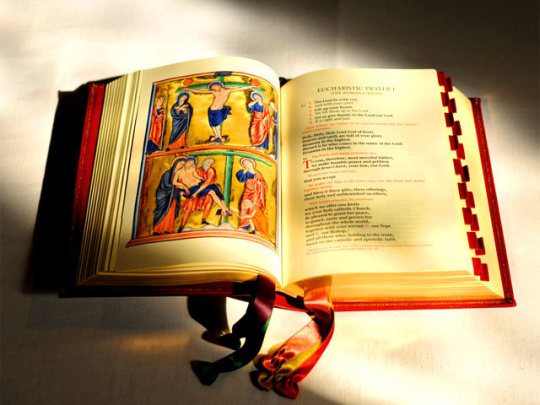
11th June >> Mass Readings (USA)
Solemnity of Corpus Christi
(Liturgical Colour: White: A (1))
First Reading
Deuteronomy 8:2–3, 14b–16a
He gave you a food unknown to you and your fathers.
Moses said to the people: “Remember how for forty years now the LORD, your God, has directed all your journeying in the desert, so as to test you by affliction and find out whether or not it was your intention to keep his commandments. He therefore let you be afflicted with hunger, and then fed you with manna, a food unknown to you and your fathers, in order to show you that not by bread alone does one live, but by every word that comes forth from the mouth of the LORD.
“Do not forget the LORD, your God, who brought you out of the land of Egypt, that place of slavery; who guided you through the vast and terrible desert with its saraph serpents and scorpions, its parched and waterless ground; who brought forth water for you from the flinty rock and fed you in the desert with manna, a food unknown to your fathers.”
The Word of the Lord
R/ Thanks be to God.
Responsorial Psalm
Psalm 147:12–13, 14–15, 19–20
R/ Praise the Lord, Jerusalem.
or
R/ Alleluia.
Glorify the LORD, O Jerusalem;
praise your God, O Zion.
For he has strengthened the bars of your gates;
he has blessed your children within you.
R/ Praise the Lord, Jerusalem.
or
R/ Alleluia.
He has granted peace in your borders;
with the best of wheat he fills you.
He sends forth his command to the earth;
swiftly runs his word!
R/ Praise the Lord, Jerusalem.
or
R/ Alleluia.
He has proclaimed his word to Jacob,
his statutes and his ordinances to Israel.
He has not done thus for any other nation;
his ordinances he has not made known to them.
Alleluia.
R/ Praise the Lord, Jerusalem.
or
R/ Alleluia.
Second Reading
1 Corinthians 10:16–17
The bread is one, and we, though many, are one body.
Brothers and sisters: The cup of blessing that we bless, is it not a participation in the blood of Christ? The bread that we break, is it not a participation in the body of Christ? Because the loaf of bread is one, we, though many, are one body, for we all partake of the one loaf.
The Word of the Lord
R/ Thanks be to God.
Sequence
Lauda, Sion
The Sequence may be said or sung in full, or using the shorter form indicated by the asterisked verses.
Laud, O Zion, your salvation,
Laud with hymns of exultation,
Christ, your king and shepherd true:
Bring him all the praise you know,
He is more than you bestow.
Never can you reach his due.
Special theme for glad thanksgiving
Is the quick’ning and the living
Bread today before you set:
From his hands of old partaken,
As we know, by faith unshaken,
Where the Twelve at supper met.
Full and clear ring out your chanting,
Joy nor sweetest grace be wanting,
From your heart let praises burst:
For today the feast is holden,
When the institution olden
Of that supper was rehearsed.
Here the new law’s new oblation,
By the new king’s revelation,
Ends the form of ancient rite:
Now the new the old effaces,
Truth away the shadow chases,
Light dispels the gloom of night.
What he did at supper seated,
Christ ordained to be repeated,
His memorial ne’er to cease:
And his rule for guidance taking,
Bread and wine we hallow, making
Thus our sacrifice of peace.
This the truth each Christian learns,
Bread into his flesh he turns,
To his precious blood the wine:
Sight has fail’d, nor thought conceives,
But a dauntless faith believes,
Resting on a pow’r divine.
Here beneath these signs are hidden
Priceless things to sense forbidden;
Signs, not things are all we see:
Blood is poured and flesh is broken,
Yet in either wondrous token
Christ entire we know to be.
Whoso of this food partakes,
Does not rend the Lord nor breaks;
Christ is whole to all that taste:
Thousands are, as one, receivers,
One, as thousands of believers,
Eats of him who cannot waste.
Bad and good the feast are sharing,
Of what divers dooms preparing,
Endless death, or endless life.
Life to these, to those damnation,
See how like participation
Is with unlike issues rife.
When the sacrament is broken,
Doubt not, but believe ‘tis spoken,
That each sever’d outward token
doth the very whole contain.
Nought the precious gift divides,
Breaking but the sign betides
Jesus still the same abides,
still unbroken does remain.
The shorter form of the sequence begins here.
*Lo! the angel’s food is given
To the pilgrim who has striven;
see the children’s bread from heaven,
which on dogs may not be spent.
*Truth the ancient types fulfilling,
Isaac bound, a victim willing,
Paschal lamb, its lifeblood spilling,
manna to the fathers sent.
*Very bread, good shepherd, tend us,
Jesu, of your love befriend us,
You refresh us, you defend us,
Your eternal goodness send us
In the land of life to see.
*You who all things can and know,
Who on earth such food bestow,
Grant us with your saints, though lowest,
Where the heav’nly feast you show,
Fellow heirs and guests to be. Amen. Alleluia.
Gospel Acclamation
John 6:51
Alleluia, alleluia.
I am the living bread that came down from heaven, says the Lord;
whoever eats this bread will live forever.
Alleluia, alleluia.
Gospel
John 6:51–58
My flesh is true food, and my blood is true drink.
Jesus said to the Jewish crowds: “I am the living bread that came down from heaven; whoever eats this bread will live forever; and the bread that I will give is my flesh for the life of the world.”
The Jews quarreled among themselves, saying, “How can this man give us his flesh to eat?” Jesus said to them, “Amen, amen, I say to you, unless you eat the flesh of the Son of Man and drink his blood, you do not have life within you. Whoever eats my flesh and drinks my blood has eternal life, and I will raise him on the last day. For my flesh is true food, and my blood is true drink. Whoever eats my flesh and drinks my blood remains in me and I in him. Just as the living Father sent me and I have life because of the Father, so also the one who feeds on me will have life because of me. This is the bread that came down from heaven. Unlike your ancestors who ate and still died, whoever eats this bread will live forever.”
The Gospel of the Lord
R/ Praise to you, Lord Jesus Christ.
4 notes
·
View notes
Text
Bulk PDF Signer
Bulk PDF signer is software which is used for a digital signature on PDF files in bulk & auto mode using DSC token. Using this product you can quickly sign thousands of PDF files by selecting the input and output directory. Which use for Software to digitally sign pdf documents, bulk automated signing, PO, HR Documents, Form 16A/B, Contracts, and agreements.
For a Demo please contact us. 9818583822 Also visit our website at www.bulkpdfsigner.com

#Bulk PDF Signer#Automated Bulk Signing#eSigner Software#PDF Signer#Digital Signature Software#PDF Signer Software
2 notes
·
View notes
Note
The Decade Cast are assigned some Autobots and Decepticons that they have to share amongst all four of them. Get ready for a long list Kari-chan because there are so many of these guys.
Their assigned Autobots are the Aerialbots, comprised of the Silverbolt the acrophobic Concorde leader, Air Raid the impulsive and fearless F-15 Eagle, Fireflight the absent-minded F-4 Phantom, Skydive the gifted strategist F-16A Fighting Falcon, Slingshot the insecure loud-mouthed Sea Harrier, Alpha Bravo the insecure slowpoke helicopter, Powerglide the show off A-10 Warthog, Universe Airazor the small but fierce F-22 Raptor, Barrel Roll the mellowed Cybertronian jet, Ro-Tor the AH-64 Apache helicopter, and Storm Fire the Space Shuttle, who five to six of them can combine to form stagnant Superion, the Air Team, comprised of Storm Jet the rowdy Cybertronian SR-71 Blackbird spy plane, Sky Shadow the A-10 Thunderbolt II, Terradive the A-10 Thunderbolt II, Treadshot the ambitious F-22 Raptor, and Windrazor the veteran F-22 Raptor, who combine into Superion Maximus, the naive and cocky Cybertronian jet twin brothers of Skyfire and Skystorm, who combine into the powerful Safeguard, and Breakaway the skilled F-35 Lighting II.
Their assigned Decepticons are the Seekers, comprised of Starscream the formerly treacherous now humble and deadly Air Commander, Skywarp the chaotic but dumb and cowardly jet, Thundercracker the egotistical jet who can write movies, Dirge the mournful and greedy conehead jet, Ramjet the dumb and lying conehead jet, Thrust the loud-mouthed and envious conehead jet, Bitstream the genius jet, Hotlink the gadget geek jet, Nacelle the eager jet, Sunstorm the sycophant and narcissistic jet, Acid Storm the quiet green jet, Ion Storm the blue jet, Nova Storm the yellow jet, Cloudcover the radioactive conehead jet, Sandstorm the desert warfare jet, Blazewake the young and brash jet, Red Wing the brave but cautious jet, Slipstream the strategic female jet, Cybertron Thundercracker the jokester and goofball jet, Armada Thrust the master manipulator and tactician jet, Dreadwing the cool-minded jet, Skyquake the short-tempered jet, Blitzwing the loudmouthed triple-changer tank and jet jerk, the Combatrons, comprised of BW Starscream the narcissist and snobby fighter jet, BB the dumb brute stealth bomber, BW Dirge the comedian and gourmet chef fighter jet, and BW Thrust the comedian figther jet, Darkwing the gloomy Tornado GR1 fighter jet, Dreadwind the depressed F-16 Fighting Falcon jet, G2 Dreadwing the dumb pacifist stealth bomber, G2 Smokescreen the manipulative fighter jet, and Megaplex, the F-22 Raptor fighter jet clone of Megatron who is good instead of evil.
All of these Autobot and Decepticons jets reside nearby within the giant Decepticon city Metrotitan. Optimus has assigned Starscream to lead this group and he also serves as a leader for the Decade cast because of the chaos duo being well look at them.

What are the Riders reaction to the Decade Cast's assigned Cybertronians being most of the flying ones and Starscream being assigned as the leader for both this group of Cybertronians, but also as the leader for the Decade cast due to the chaos duo being chaotic.

I think they would question anyone assigning Tsukasa and Daiki robots they could possibly order around to do their chaotic bidding... but I guess they'll all count on Natsumi, Onodera and hopefully Starscream to keep them in line
1 note
·
View note
Text
Simplify TDS compliance with ExpressTDS. Our cloud-based TDS return filing software offers automated calculations, easy form generation, and secure data storage. Stay updated with the latest TDS rules and regulations. Try ExpressTDS today!

#tds cloud based software#free tds software for chartered accountants#tds return filing software#expresstds
1 note
·
View note
Text

Student cleans up archival data and uncovers two stellar cocoons
While investigating 16 years of images of young stars from a retired astronomical camera, Leiden master's student Sam de Regt discovered that two of those stars were still enveloped in birth clouds that had not been seen at this level of detail before. He publishes his data-cleaning method and the new images of the two stars in the journal Astronomy & Astrophysics.
When Sam de Regt (Leiden University, the Netherlands) attended lectures of Matthew Kenworthy (Leiden University) and Christian Ginski (now University of Galway, Ireland), he thought it would be interesting to research the so-called PDI method for his master's thesis. PDI stands for Polarimetric Differential Imaging. This method allows astronomers to distinguish between the extremely bright, unpolarised light from a star and the faint, polarised light reflected from dust particles located in a disk around the star. In such dust disks, planets can be formed.
Very Large Telescope
Ginski and Kenworthy suggested to De Regt to reanalyze archival images from the NACO instrument. That instrument was located on the Very Large Telescope in Chile from 2003 to 2019 and contains data from 57 young stars.
After cleaning up the images, De Regt saw dust disks around twenty known stars. To his surprise, in addition to those 20, two other stars were found to contain dust structures in these observations: YLW 16A and Elia 2-21. These protostars are located some 360 light years towards the constellation Ophiuchus (known as the serpent-bearer).
Openly accessible
"I find it super cool that we have made two new images of these stellar cocoons," says De Regt. "Furthermore, it is of course great that, thanks to the standard procedure we developed, the data have been reduced and are openly accessible via a Zenodo archive."
Thesis supervisor Matthew Kenworthy adds: "This allows other astronomers to carry out research with this data, breathing new life into it. It's a good example of the Open Science principle."
Exoplanets
"The fact that Sam managed to achieve this in a few months is fantastic," says graduation supervisor Christian Ginski. "We don't often witness such productivity."
De Regt is now a PhD student at Leiden University. He studies how the formation of exoplanets leaves imprints in their atmospheres.
6 notes
·
View notes
Text

Conquer TDS in Mumbai : Tax Print - Your Ultimate TDS Software Solution
Say goodbye to manual calculations and paperwork! Tax Print, the premier TDS software in Mumbai, empowers businesses and professionals with seamless TDS management.
Streamline your workflow and ensure compliance with features like automated TDS calculation, effortless challan generation, and efficient returns filing. Import data with ease and generate comprehensive certificates (Form 16, 16A, 27D) for smooth documentation.
Tax Print offers unmatched advantages:
Accurate & Automated TDS Calculations
Effortless Tax Collection & Challan Generation
Seamless Return Filing & Data Management
Versatile TDS Computation Across Income Heads
Comprehensive Coverage & Certificate Generation
E-TDS Statements, Projections, and Auto-Updates
Don't waste time grappling with TDS complexities. Tax Print is your one-stop solution for efficient and compliant TDS management in Mumbai. Get started today and unlock peace of mind!
0 notes